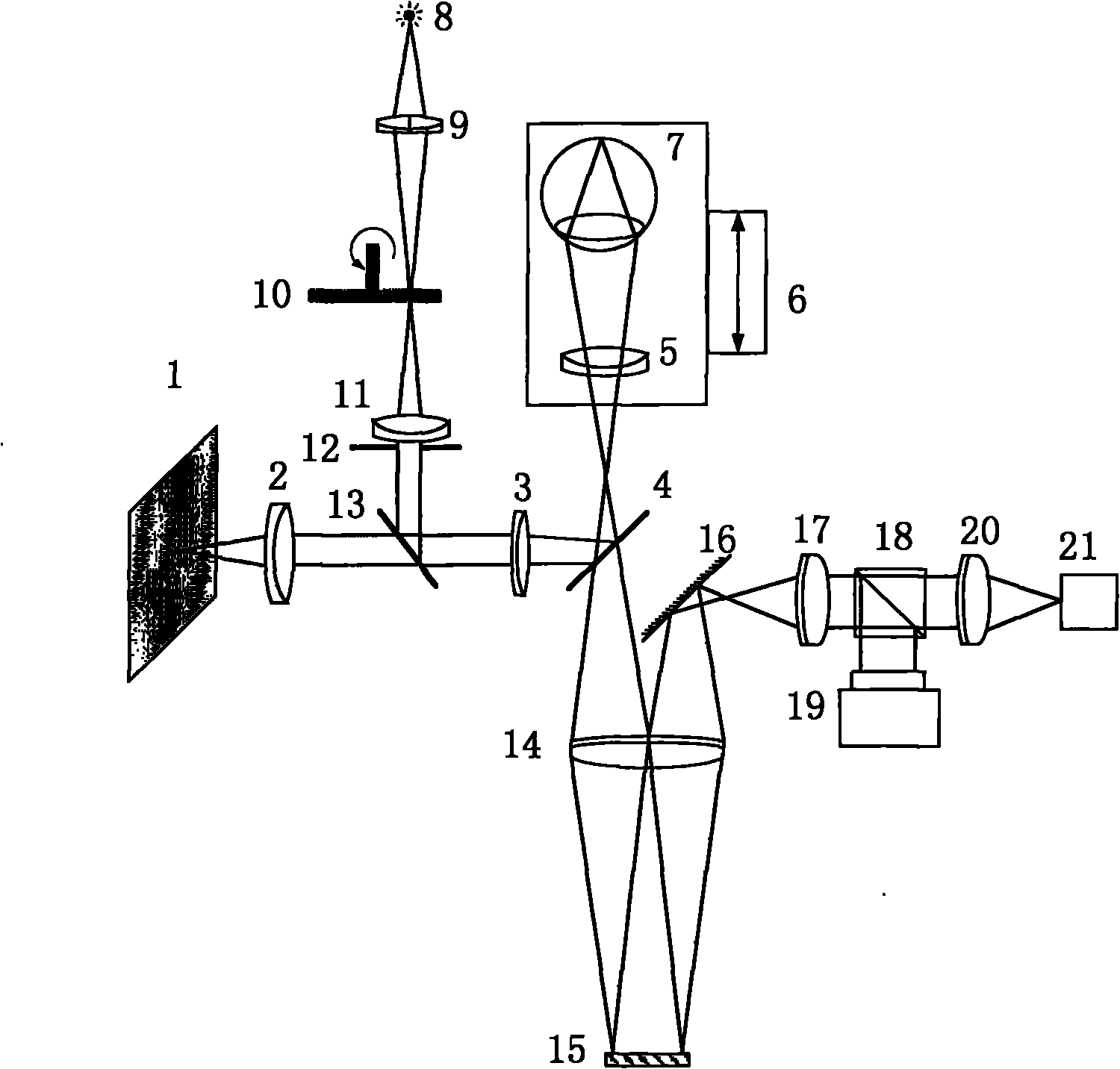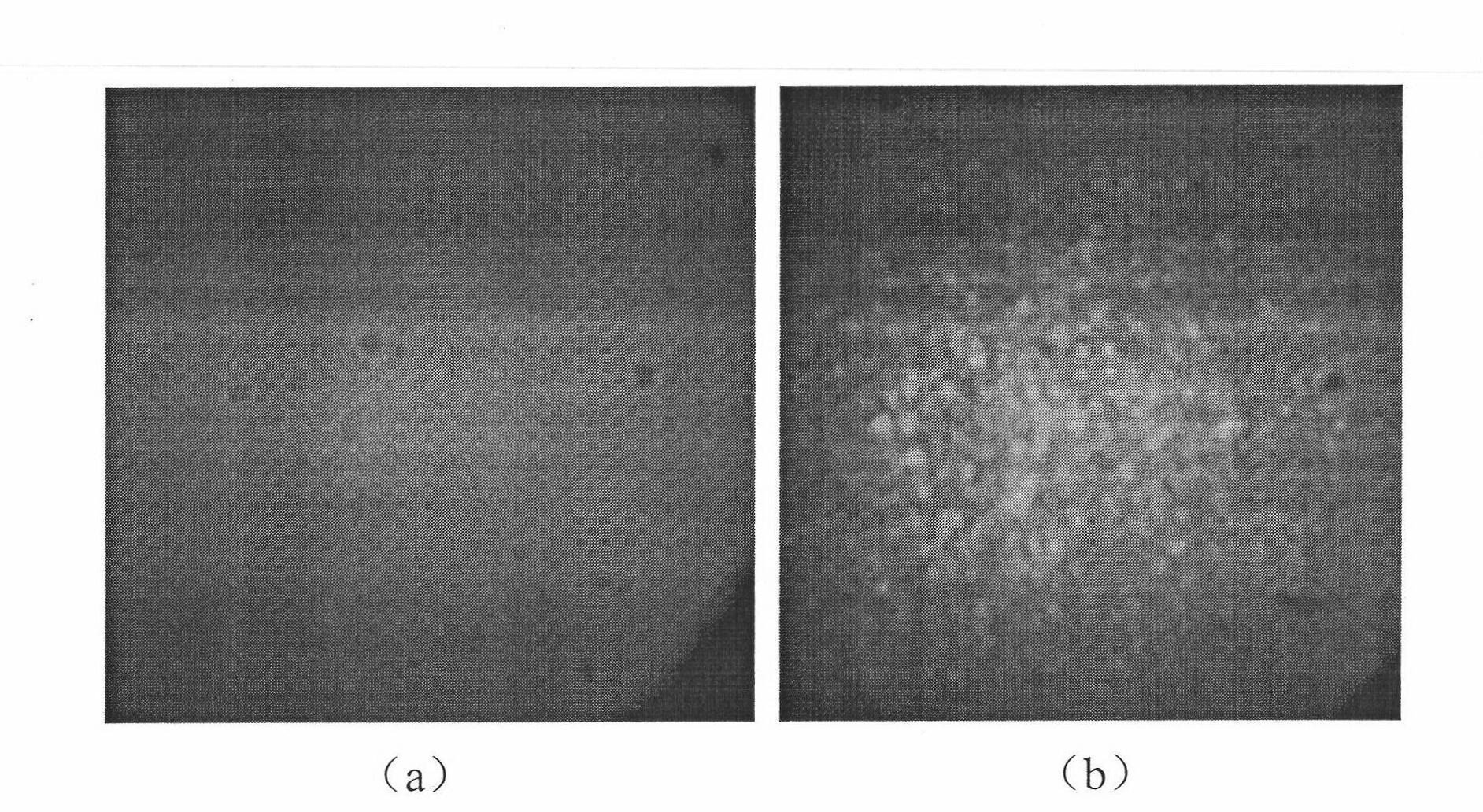Universal liquid crystal adaptive aberration correcting retina imaging system
A technology of liquid crystal self-adaption and aberration correction, which can be used in applications, medical science, ophthalmoscope, etc., and can solve the problem of insufficient imaging clarity
- Summary
- Abstract
- Description
- Claims
- Application Information
AI Technical Summary
Problems solved by technology
Method used
Image
Examples
Embodiment Construction
[0030] 1) Use a 3.5-inch TFT-LCD screen with a pixel size of 300 μm, and place a narrow-band filter of 510nm to 550nm in front, so that the central wavelength of light emission λ' is 530nm, and drive the LCD screen to display a 1.5mm "E" as the visual mark light source 1.
[0031] 2) The illumination source 8 used is a small semiconductor laser with fiber coupling, the core diameter is 100 μm, the emission wavelength λ is 808 nm, and the output power is adjustable in the range of 10 mW to 20 mW.
[0032] 3) The first lens 2, the second lens 3, the third lens 5, the fourth lens 9, the fifth lens 11, the sixth lens 14, the seventh lens 17, and the eighth lens 20 are double cemented achromatic lenses, and The surface is coated with anti-reflection coating. The calibers are: 20mm, 25mm, 25mm, 10mm, 20mm, 40mm, 20mm, 20mm; the focal lengths are: 150mm, 250mm, 200mm, 30mm, 50mm, 250mm, 86mm, 100mm.
[0033] 4) Select the human eye 7 as 200-degree astigmatism and 200-degree myopia,...
PUM
 Login to View More
Login to View More Abstract
Description
Claims
Application Information
 Login to View More
Login to View More - R&D
- Intellectual Property
- Life Sciences
- Materials
- Tech Scout
- Unparalleled Data Quality
- Higher Quality Content
- 60% Fewer Hallucinations
Browse by: Latest US Patents, China's latest patents, Technical Efficacy Thesaurus, Application Domain, Technology Topic, Popular Technical Reports.
© 2025 PatSnap. All rights reserved.Legal|Privacy policy|Modern Slavery Act Transparency Statement|Sitemap|About US| Contact US: help@patsnap.com



